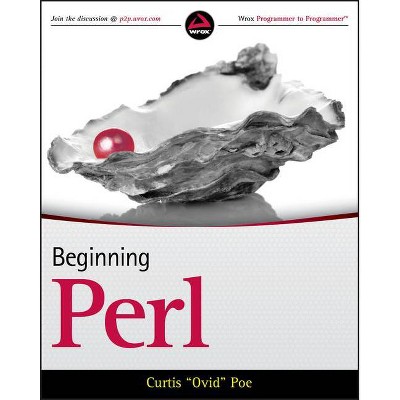Beginning Database Design Solutions - (Wrox Programmer to Programmer) by Rod Stephens (Paperback)

Similar Products
Products of same category from the store
AllProduct info
<p/><br></br><p><b> About the Book </b></p></br></br>"Wrox programmer to programmer"--P. [1] of cover.<p/><br></br><p><b> Book Synopsis </b></p></br></br>This book is intended for IT professionals and students who want to learn how to design, analyze, and understand databases. The material will benefit those who want a better high-level understanding of databases such as proposal managers, architects, project managers, and even customers. The material will also benefit those who will actually design, build, and work with databases such as database designers, database administrators, and programmers. In many projects, these roles overlap so the same person may be responsible for working on the proposal, managing part of the project, and designing and creating the database. <p>This book is aimed at IT professionals and students of all experience levels. It does not assume that you have any previous experience with databases or programs that use them. It doesn't even assume that you have experience with computers. All you really need is a willingness and desire to learn.</p> <p>This book explains database design. It tells how to plan a database's structure so the database will be robust, resistant to errors, and flexible enough to accommodate a reasonable amount of future change. It explains how to discover database requirements, build data models to study data needs, and refine those models to improve the database's effectiveness.</p> <p>The book solidifies these concepts by working through a detailed example that designs a realistic database. Later chapters explain how to actually build databases using two common database products: Access 2007 and MySQL.</p> <p>The book finishes by describing some of the topics you need to understand to keep a database running effectively such as database maintenance and security.</p> <p>This book explains database design. It tells how to determine what should go in a database and how the database should be structured to give the best results.</p> <p>To remain database neutral, the book does not assume you are using a particular database so you don't need any particular software or hardware. To work through the Exercises, all you really need is a pencil and some paper. You are welcome to type solutions into your computer if you like but you may actually find working with pencil and paper easier than using a graphical design tool to draw pictures, at least until you are comfortable with database design and are ready to pick a computerized design tool.</p><p/><br></br><p><b> From the Back Cover </b></p></br></br><p>Beginning Database Design Solutions</p> <p>Databases play a critical role in the business operations of most organizations; they're the central repository for critical information on products, customers, suppliers, sales, and a host of other essential information. It's no wonder that the majority of all business computing involves database applications.</p> <p>With so much at stake, you'd expect most IT professionals would have a firm understanding of good database design. But in fact most learn through a painful process of trial and error, with predictably poor results.</p> <p>This book provides readers with proven methods and tools for designing efficient, reliable, and secure databases. Author Rod Stephens explains how a database should be organized to ensure data integrity without sacrificing performance. He shares procedures for designing robust, flexible, and secure databases that provide a solid foundation for all of your database applications. The methods and techniques in this book can be applied to any database environment, including Oracle(R), Microsoft Access(R), SQL Server(R), and MySQL(R). You'll learn the basics of good database design and ultimately discover how to design a real-world database.?</p> <p>What you will learn from this book</p> <ul> <li> <p>How to identify database requirements that meet users' needs</p> </li> <li> <p>Ways to build data models using a variety of modeling techniques, including entity-relational models, user-interface models, and semantic object models</p> </li> <li> <p>Tips for understanding the different types of databases, including relational databases, flat files, spreadsheets, XML and object databases</p> </li> <li> <p>How to refine and tune the design to improve database performance</p> </li> <li> <p>Techniques for understanding the relationship between good application design and database design</p> </li> <li> <p>Methods for designing flexible and robust databases that can adapt to business change and growth</p> </li> <li> <p>Ways to design for ease of maintenance and support</p> </li> <li> <p>How to avoid common database design mistakes</p> </li> </ul> <p>Who this book is for</p> <p>This book is for anyone interested in learning to design, build, analyze, and understand databases. No previous experience with databases or programs is required.</p> <p>Wrox Beginning guides are crafted to make learning programming languages and technologies easier than you think, providing a structured, tutorial format that will guide you through all the techniques involved.</p><p/><br></br><p><b> About the Author </b></p></br></br><b>Rod Stephens</b> is a professional software developer who has built a wide variety of software and database applications in his 20-year career. He is the author of 18 books and more than 250 articles, and is a regular contributor to DevX.com (www.devx.com). Rod's clear, compelling writing makes it easy for less experienced readers to master new material. His current position as an adjunct instructor for ITT Technical institute has given him additional insight into the kinds of discussion, examples, and exercises that students find most helpful.
Price History
Price Archive shows prices from various stores, lets you see history and find the cheapest. There is no actual sale on the website. For all support, inquiry and suggestion messagescommunication@pricearchive.us



















